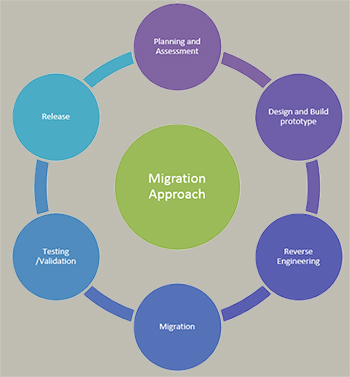Cloud Development
THE RISE OF CLOUD DEVELOPMENT
People began to realize the impact of software in the industry a while back when many activities started taking place in online spaces. Most companies in the world now rely on software for the efficient running of their businesses, and this has enabled them to be more productive over the years. One significant development that has taken place in this regard is the emergence and popularity of the Cloud. Individuals and organizations look to the Cloud for almost everything, and this includes the storage of data, transmission of information, communication and retail services. As such, it has positively impacted our world.
Even with all these developments taking place, the Clouds still lacks one thing in that most software development takes place offline as opposed to in the Cloud. This kind of software development involves editing code, building and debugging it as well as analyzing it. Given that these activities are essential in the running of the Cloud, it is thus necessary that the Cloud comes in to take its place in this regard.
Most software gets developed in the Cloud, making it a multi-billion industry. As such, there has been a need to have Cloud providers such as Google, Microsoft and the likes to look at ways in which they can change the workings of the Cloud for software development. There have been shifts in development pointing to the use of the Cloud in software development shortly. One such indication that developers are looking to use Cloud-based integrated development environments is the purchase of Cloud9 by Amazon in the recent times.
With these changes taking place as it becomes more and more evident that we are soon moving software development processes to the Cloud, it becomes important to figure out why people are favoring the Cloud as opposed to localhost and what benefits the shift has in store for developers.
Software migration
When it comes down to software development, two functions tend to clash owing to their competing interests: the developers and the IT administrators. While the administrators seek to have control over the process and they wish to have a system that is secure and stable, developers lean into having choices when it comes to frameworks, languages, and methods. Also, developers wish to have different services for each scenario to aid in flexibility while administrators rely on inflexible templates which are a result of several tests. As such, tension comes about as to who should have control over the development servers as well as who should decide the programming standards.
 It all comes down to who has root access. When development processes take place in the developer’s machine on localhost, they get to control the frameworks, configuration, and languages which is something developers want out of the processes. However, this technique comes with a shortcoming regarding sharing scalability. As such, it is not useful in a large organization where many shares are necessary. If a developer wishes to share their progress, they have the alternative of using central servers under the control of IT using VM-based systems. This technique was once quite popular, but people are looking to find new ways in which they can share data, owing to the substantial nature of these systems, thus hampering sharing processes. These systems are also expensive to maintain, and it takes up a lot of time to share images with other people.
It all comes down to who has root access. When development processes take place in the developer’s machine on localhost, they get to control the frameworks, configuration, and languages which is something developers want out of the processes. However, this technique comes with a shortcoming regarding sharing scalability. As such, it is not useful in a large organization where many shares are necessary. If a developer wishes to share their progress, they have the alternative of using central servers under the control of IT using VM-based systems. This technique was once quite popular, but people are looking to find new ways in which they can share data, owing to the substantial nature of these systems, thus hampering sharing processes. These systems are also expensive to maintain, and it takes up a lot of time to share images with other people.
With sharing being hard with these systems as well as on localhost, developers tend to hoard their assets as they have no way in which they can show off their progress. Thus, it is crucial that they have ways in which they can collaborate. Cloud solutions enable them to share their assets, gain feedback and work on improving their processes for better results.
Cloud development benefits
Developers can now use the Cloud in software development thanks to the rise of container technology which supercharges development backends such that they can match workflows. In this way, everything in the development process, starting from the runtimes all the way to the workspaces, can take place in the Cloud.
Another benefit that comes with the use of the Cloud is the avoidance of version control issues. Given that developers can share as well as cloned the IDEs, they get to be at the top of things to develop software that can run across multiple devices.
With this technique, IT administrators get to have root control over the system while developers get to enjoy flexibility in the definition of their programming stacks. Cloud providers are also moving towards open source developments, thus making the development processes more flexible and attracting many people to the use of the Cloud.
All these improvements also come with the added benefits of being less expensive as compared to localhost and integrated as well as customizable environments. As such, it is only a short period before developers take their software development processes to the Cloud as more and more people move away from localhost.



